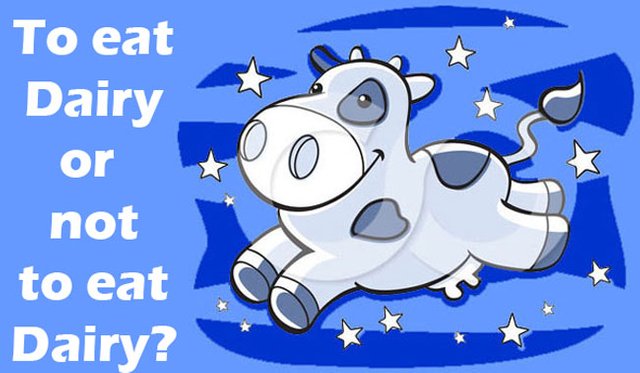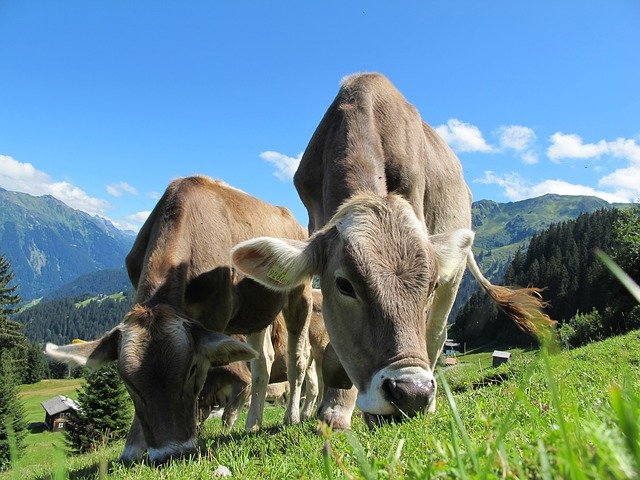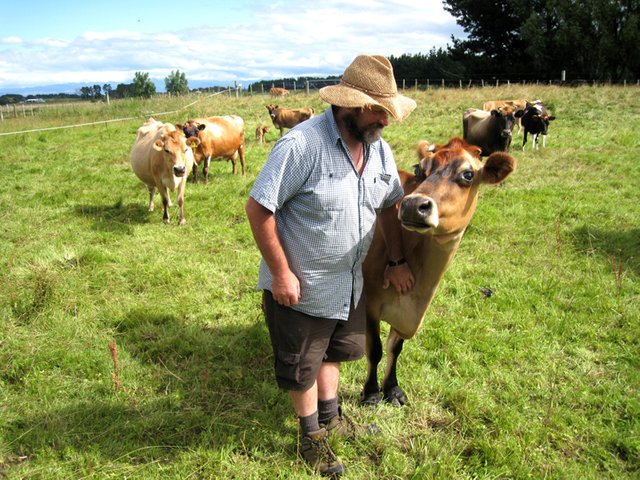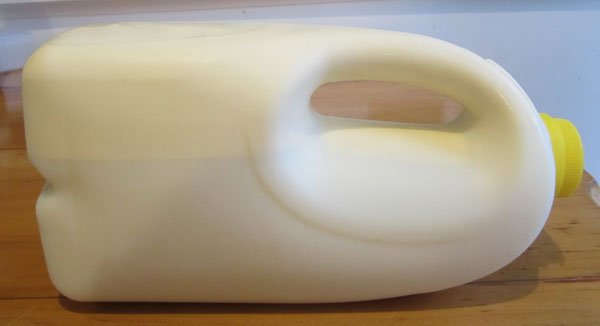Should you eat Dairy products? Part 2 – Quality of the milk
To drink milk, or not to drink milk, is a question that isn’t easily answered. There are a lot of conflicting theories about dairy products, depending on where you’re looking for your information.

In the first post, which you can read here, we discussed pasteurisation and raw milk. In this second post, we will look some more at what constitutes good quality milk. We’ll look at:
• Type of feed
• Organic vs. non-organic
• A1 vs A2 milk
• Type of cows
• Fat content
• Homogenised or not
• Freshness
Type of feed
The quality of the milk depends on the quality of the feed, and the health of the cows. Healthy cows need to be raised on pasture, eating grass or hay, with room to roam about, and somewhere clean to rest and sleep.
Here in New Zealand, this is still the case for most cows. But that’s not the case in all countries. In some countries, many cows are kept in confinement, unable to find a clean place to stand or lie down, never see the sky or breathe fresh air, and eat grains (or worse, according to Fast Food Nation, by Eric Schlosser).
Cows are designed to eat grass and are not meant to be fed on grain. Products from cows fed grass contain much higher levels of CLA (conjugated linoleic acid – a fat with cancer fighting properties), Omega-3 fats, beta-carotene, vitamin A, and vitamin E than those those fed grains.

As well as feeding cows inappropriately, factory farming methods may include:
• confining the animals in spaces too small for them,
• feeding of growth hormones such as rBGH (made by Monsanto), which causes mastitis, a painful udder infection,
• and routine feeding of antibiotics to prevent illness.
For decades, vegetarians and vegans have been shunning meat and/or dairy products for animal cruelty reasons, understandably. But if you are vegetarian, to do that may be sacrificing your health unnecessarily, by reducing your range of nutrients. There are alternatives, such as supporting small, local farms, eating free range eggs and pasture raised dairy.
Organic vs. non organic
Pesticides on grass that is eaten by cows make their way into the milk supply. A healthy person’s liver can neutralise and eliminate such toxins. But we’re exposed to lots of toxins in our modern world. At some point your liver will get overloaded and be unable to do its job properly. So it makes sense to eat organic when you can (without stressing about it if you can’t). This applies to all foods, not just dairy.
Pesticides are usually herbicides (about 65% in NZ), fungicides (20%) or insecticides (10%). The level of problem will depending on where you live, and which ones are being used. Here in NZ, some of the residues that may be in non-organic milk include DDT and organophosphates.
A1 vs A2 milk
Another aspect of the milk is whether the beta-casein component of the protein is A1 type or A2 type. Although it’s not conclusive at this stage, research done at Lincoln University, in New Zealand, has shown correlations between A1 milk and diseases such as heart disease and Type 1 diabetes. These diseases have no such correlations with A2 milk.
Originally, all milk was A2. About 5000 years ago there was a mutation in Europe and the A1 genes spread through cow herds. These days:
• Goats and sheep milk is equivalent to A2 milk, as is human milk.
• Heirloom breeds tend to have more A2, newer breeds – A1.
• Different countries have a different mix between the two. For example, Iceland is mainly A2, where Finland is more A1. The level of heart disease is higher in Finland.
• Masai and other African cattle only produce A2 milk, which is significant when you consider that the Masai are very healthy on a diet of mainly meat, blood and fermented milk, with little heart disease.

Type of cows
Holstein or Friesian cows are commonly used for producing dairy as they have a higher milk yield. But more isn’t necessarily better. To achieve this, they are bred to have higher levels of growth hormone, which is undesirable for feeding to children, unless they have growth deficiency diseases.
I prefer milk from Jersey or Guernsey cows, which has these characteristics:
• It is usually predominantly A2 milk
• Lower production of milk per cow, which means the available vitamins are more concentrated in the milk
• A higher quantity of cream, so rich in the fat soluble factors
• Generally has a superior taste
Which leads to your next question – but surely more cream and thus more saturated fat is bad for me?

The fat content
Many people are now purchasing low fat dairy products under the mistaken belief that saturated fats, especially dairy fats, are bad for you. In fact, traditional societies ate large amounts of saturated fat and enjoyed excellent health. When they started eating “western” food, their health declined dramatically.
Animal fat is a good source of valuable vitamins such as A & D, which are needed to assimilate calcium and protein. Many people believe that betacarotene, found in plants, is the same as Vitamin A. Yes, beta-carotene can be converted to Vitamin A by most people, but some people are unable to make the conversion or make it poorly, especially infants & children (those who need it most) and people with hypothyroid or diabetes. Fat is also needed to make the conversion, so conversion can also be hindered by a low fat diet.
Fat, and vitamin A, are needed for the proper utilisation of protein. Problems with too much protein are usually because lean protein is being eaten, without the needed fat. Tribes studied by Weston Price, when on their native diets, knew to avoid lean meat, as it made them ill, and would eventually kill them.
It is widely and inaccurately repeated that eating fat makes you obese. Certainly some fats are very unhealthy, but saturated fats and cholesterol are needed by the body for building materials. It is mainly excess carbohydrates (eg bread, pasta, sugar) that get stored as fat.
The main increase in heart disease has been since we started adopting low fat diets. Many studies have shown that those people who eat most saturated fats have the least heart disease.
We are just starting to learn about the role of certain fatty acids (such as CLA – conjugated linoleic acid) and how they are vital to our well being. For example, CLA isomer 9-11 (the isomer found in milk) is being linked to and credited for its ability to fight and prevent cancer cell growth. Our bodies cannot make these fatty acids. CLA is only produced in ruminant animals and is only available in any significant quantity in 100% grass fed ruminates.
In Nutrition & Physical Degeneration, Weston Price talks about the health benefits of butter. In his studies, he found a substance he called Activator X. At first he thought it was Vitamin D, but found it had some different properties. It is now thought that what he found was Vitamin K. It is especially important in mineral utilisation, including building tooth strength. The best source of it is butter from cows that are consuming the fast growing spring grass.
Read more about how to choose and use good fats here.

Homogenisation
Homogenisation is a process that breaks down butterfat globules so they don’t rise to the top of the milk. But by doing so the structure of the fat is changed.
There is a big increase in surface area of the fat globules. The original fat globule membrane is lost and a new one is formed that incorporates a much greater portion of casein and whey proteins. Lipid scientist Mary Enig thinks this may be one of the reasons modern processed milk is a common allergen.
Other researchers have hypothesised that these changes may account for the increases in heart disease. They suspect that because the fat molecules are smaller, they are not be digested as they should be. Especially an enzyme called xanthine oxidase, which can then pass into the blood stream, and potentially contribute to inflammation in the arteries.
I can’t find any studies looking into this further, so this stage, we just don’t know how damaging the homogenisation process is. Whether you choose raw or pasteurized milk, avoiding homogenised milk is probably prudent.
Freshness
One reason that the big milk producers want to pasteurise the milk is that it will keep longer. With raw milk, after a few days it will sour naturally. It is still nutritious, but turns to a different form. So with raw milk, you can always tell how fresh it is.
Pasteurised milk may already be several days old by the time it reaches the supermarket. There is no way for you to tell how fresh it is. You can tell when it’s gone off though – it turns putrid and undrinkable!
Now we know how to identify good quality milk, next time we’ll discuss whether dairy is a good food for humans.
Thanks for reading
Photos by myself, @sift666 or frpm Pixabay, unless otherwise stated.
Follow me for more health, nutrition, food, lifestyle and recipe posts.

_Contact me in Discord, SteemitChat, or through Peerhub to ask about one on one nutritional coaching or EFT (Emotional Freedom Technique) sessions by Skype. Bitcoin, Steem or Paypal accepted.
Some of my previous posts:
RECIPES AND KITCHEN TIPS:
• Choc Blackcurrant Smoothie
• Paleo Cottage Pie
• Feijoa Pear Smoothie
• Grain free, dairy free Pumpkin & Cashew Bread
• Tip for storing ginger & tumeric
• Grain Free Banana Cashew muffins
• Warming winter soup
• Breakfast ideas
• Healthy Chocolate & Fudge
• Jerky with vegetables
• Choco-mallow protein bars
• Equipment for the real food kitchen
• Carrot Almond bread
• Grain free Fruit & Nut bar
• Vegetable muffins
• Finger food for a gathering
• Real food ideas for snacks and road trips
• Grain free cheese muffins
• Best ever (and easiest) Christmas cake
• Orange Cranberry Xmas Breakfast Muffins
• Festive smoothies for Xmas morning
• Crisp & crunchy Xmas cheese stars
• Xmas menu ideas
• Planning your holiday eating to be a bit more balanced
• For MORE RECIPES and my 15 step Whole Food cooking course, see my recipe website.
NUTRITION:
• The wide variety of healthy diets out and what they have in common
• The travels of Weston A Price and his discoveries about healthy diets
• Good fats vs bad fats
• DNA testing for better Health & Fitness
• DNA testing part 2: How Well Do I Digest Carbs?
• DNA testing Part 3: I can’t eat Carbs & How to Manage that
• About the Gut & Psychology syndrome (GAPS) diet Part 1 – Can it help autism?
• GAPS diet Part 2: Foods we can’t have
• GAPS diet Part 3: Foods we CAN have
• GAPS diet Part 4: What if I can’t eat some animal foods
• Salicylate intolerances
• Introduction to the Paleo diet
• How to get started on a Real Food diet Part 1
• Why use Real Food diets for healing
• How to get started on a Real Food diet Part 2
• We did a three day water fast
• Comparison of different diets – which is for you?
• Should you eat Dairy? Part 1: Pasteurisation


Amazing! I clicked on this just to see if you would talk about A1 and A2, and you talked about everything, including grass fed and pasteurization in the last post. I like my milk fermented with yogurt cultures, but that's not strictly a milk subject. Fermentation is a large subject.
I learned recently that goat's milk has a decent amount of caprylic acid, excellent for fast ketones. Have you ever had goat's milk butter? I haven't. I'm thinking of making some so I can make goat ghee.
Yes, activator X is vitamin K2.
K1 comes from leafy greens.
This is a great post. Thank you.
Thanks.
I will talk about kefir and yoghurt in later posts.
Do you have access to goat cream, or will you just see what you can skim off the top of the milk? Goat of any kind is pretty limited in NZ. Goat ghee sounds amazing.
I've only recently thought of it, I should be able to get fresh goat's milk locally.
Fantastic post @kiwideb!
I also think that we need to look at dairy's ph. My understanding is that it becomes highly acidic. (This is likely A1 milk as opposed to A2 milk.)The body will neutralize it with calcium that it robs from the skeletal frame. Hence our osteoporosis epidemic. Throwing more dairy at the problem makes the whole cycle worse.
Another really informative post, thanks very much @kiwideb
WOW! That's a lot of information. Thank you for your research @kiwideb. I grew up next to a dairy farm and know the earth the cows grazed on. I could never stomach warm milk though. That's about as fresh and organic as you can get! LOL